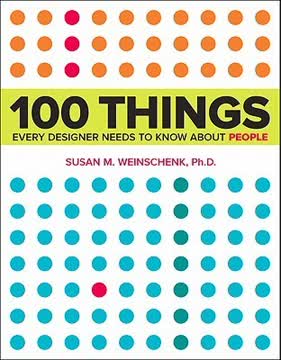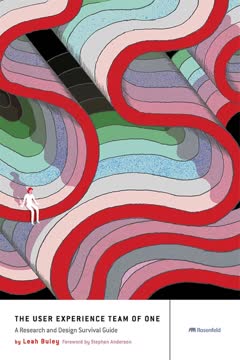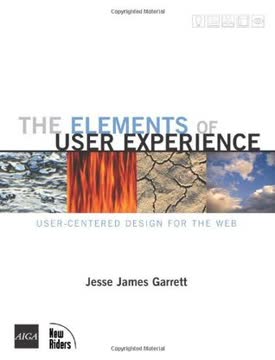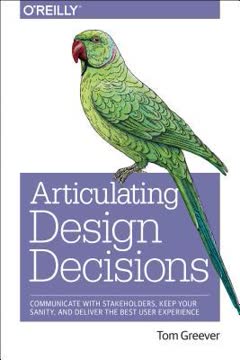Key Takeaways
1. Research is critical thinking, not just data collection
Research is just another name for critical thinking.
Essence of research. Research in design is not about collecting vast amounts of data or proving yourself right. It's about systematically inquiring to increase knowledge and inform decisions. Good research requires discipline, skepticism, and a willingness to challenge assumptions. It involves asking the right questions, gathering relevant information, and critically analyzing the results.
Key principles:
- Start with clear objectives and research questions
- Be prepared to change your assumptions based on findings
- Focus on quality of insights rather than quantity of data
- Involve the whole team to build shared understanding
- Use research to reduce risk and increase confidence in decisions
2. Define clear objectives before starting any research
If you rely on other people to set the agenda for inquiry, you might end up caught between fuzzy focus groups and an algorithm that chooses a drop shadow from among forty-one shades of blue.
Clear goals drive effective research. Before diving into any research activity, it's crucial to define what you need to know and why. Start by identifying key decisions that need to be made and the information required to make them confidently. Frame your research questions to be specific, actionable, and practical.
Steps to define research objectives:
- Identify the problem or opportunity you're addressing
- Determine what decisions need to be made
- List assumptions that need to be validated
- Prioritize research questions based on potential impact
- Choose appropriate research methods to answer those questions
Remember that the goal is not to do research for its own sake, but to gather insights that will directly inform your design and business decisions.
3. Organizational research is crucial for project success
Design doesn't happen in the deep, cold vacuum of space. Design happens in the warm, sweaty proximity of people with a lot on their minds.
Understand the context. Organizational research helps you navigate the complex human terrain where your design will be implemented. By understanding the structure, culture, and priorities of the organization, you can anticipate challenges and align your work with business goals.
Key areas to investigate:
- Stakeholder mapping: Identify key decision-makers and influencers
- Workflow analysis: Understand current processes and pain points
- Resource assessment: Determine available budget, time, and skills
- Cultural factors: Uncover unwritten rules and organizational values
Conducting thorough organizational research helps you build allies, neutralize potential opposition, and increase the chances of your design being successfully adopted and implemented.
4. User research builds empathy and informs design decisions
To design, to code, to write is to embrace danger, to plunge ahead into the unknown, making new things out of constantly changing materials, exposing yourself to criticism and failure every single day.
Empathy drives innovation. User research allows you to step out of your own perspective and truly understand the needs, behaviors, and contexts of the people you're designing for. This deep understanding is crucial for creating solutions that resonate with users and solve real problems.
Effective user research techniques:
- Ethnographic interviews: Understand users in their natural context
- Contextual inquiry: Observe users performing relevant tasks
- Participatory design: Involve users in the design process
- Journey mapping: Visualize the user's experience over time
Remember that the goal is not just to collect data, but to develop genuine empathy and insights that will inform every aspect of your design process.
5. Competitive research identifies opportunities and threats
The hardest competitor to beat is the one your potential customers are using right now.
Know your landscape. Competitive research helps you understand where your product or service fits in the broader market ecosystem. It's not just about direct competitors, but also alternative solutions and potential disruptors.
Key components of competitive research:
- SWOT analysis: Assess strengths, weaknesses, opportunities, and threats
- Feature comparison: Analyze how your offering stacks up against alternatives
- User perception: Understand how customers view different options
- Market trends: Identify emerging technologies and changing user needs
Use competitive insights to differentiate your offering, anticipate market shifts, and identify unmet user needs that represent opportunities for innovation.
6. Evaluative research refines and validates design solutions
No matter how much research and smart design thinking you did up front, you won't get everything right out of the gate, and that's okay.
Iterate and improve. Evaluative research helps you test and refine your design solutions throughout the development process. This iterative approach allows you to catch usability issues early, validate design decisions, and continuously improve the user experience.
Key evaluative research methods:
- Usability testing: Observe users interacting with your design
- A/B testing: Compare different versions to optimize performance
- Heuristic evaluation: Assess designs against established principles
- User feedback: Gather qualitative input from actual users
Remember that evaluation is not a one-time event, but an ongoing process throughout the design lifecycle. Be prepared to make changes based on what you learn.
7. Analysis and models transform raw data into actionable insights
As long as you're clear about your questions and your expectations, don't fret too much about the classification of the research you want to undertake.
Make sense of the data. Analysis is where you transform raw research data into meaningful insights that can drive design decisions. It's a collaborative process that involves identifying patterns, synthesizing information, and creating models that represent user needs and behaviors.
Useful analysis techniques and models:
- Affinity diagramming: Group and categorize research findings
- Personas: Create archetypal users to represent key segments
- Mental models: Map users' thought processes and expectations
- Customer journey maps: Visualize the end-to-end user experience
The goal of analysis is not just to summarize findings, but to generate actionable insights that directly inform your design strategy and decisions.
8. Surveys can be dangerous if not designed and used properly
A survey is a survey. A survey should never be a fallback for when you can't do the right type of research—because designing a good survey is not easy. Surveys are the most difficult research method of all.
Handle with care. While surveys can provide valuable quantitative data, they are often misused and misinterpreted. Poorly designed surveys can lead to misleading results and false confidence in decisions.
Key considerations for effective surveys:
- Clear objectives: Define what you need to learn and why
- Proper sampling: Ensure your respondents represent your target population
- Well-crafted questions: Avoid bias and ensure clarity
- Appropriate analysis: Use the right statistical methods
- Contextual interpretation: Consider results alongside other research
Remember that surveys are just one tool in the research toolkit. They work best when combined with qualitative methods that provide deeper insights into user motivations and behaviors.
9. Analytics provide quantitative data to optimize designs
Just because something is measurable doesn't make it meaningful; tracking the wrong metrics can be worse than not tracking any.
Data-driven decisions. Analytics allow you to measure actual user behavior and optimize your design based on real-world performance. However, it's crucial to focus on meaningful metrics that align with your business goals and user needs.
Key principles for effective use of analytics:
- Define clear goals and KPIs aligned with business objectives
- Look beyond vanity metrics to focus on actionable insights
- Combine quantitative data with qualitative research for context
- Use A/B testing to validate design changes
- Continuously monitor and adjust based on performance data
Remember that analytics are a powerful tool, but they should inform, not replace, human judgment and design expertise. Always consider the broader context and potential unintended consequences of optimization efforts.
Last updated:
FAQ
What's "Just Enough Research" about?
- Overview: "Just Enough Research" by Erika Hall is a guide to conducting effective research in design and product development. It emphasizes practical, efficient methods that can be integrated into everyday work.
- Purpose: The book aims to demystify research, making it accessible to non-researchers and helping teams make informed decisions based on evidence rather than assumptions.
- Content Structure: It covers various types of research, including user, competitive, and evaluative research, and provides guidance on analysis, surveys, and analytics.
- Target Audience: The book is intended for designers, developers, and anyone involved in product development who wants to incorporate research into their process without becoming overwhelmed.
Why should I read "Just Enough Research"?
- Practical Guidance: The book offers actionable advice on how to conduct research efficiently, making it ideal for busy professionals who need to integrate research into their workflow.
- Demystifies Research: Erika Hall breaks down complex research concepts into understandable and manageable parts, making it accessible to those without a research background.
- Improves Decision-Making: By focusing on evidence-based decision-making, the book helps teams avoid costly mistakes and assumptions, leading to better product outcomes.
- Encourages Critical Thinking: It fosters a mindset of continuous questioning and learning, which is crucial for innovation and staying competitive in the market.
What are the key takeaways of "Just Enough Research"?
- Research as a Tool: Research is a tool for critical thinking and should be used to inform decisions, not just validate preconceived ideas.
- Types of Research: The book outlines different types of research, such as user, competitive, and evaluative, and when to use each.
- Collaboration is Key: Effective research requires collaboration and shared understanding among team members to ensure insights are applied effectively.
- Bias Awareness: Recognizing and mitigating biases in research is crucial for obtaining accurate and useful insights.
How does Erika Hall define research in "Just Enough Research"?
- Systematic Inquiry: Research is defined as systematic inquiry aimed at increasing knowledge about a particular topic.
- Types of Research: It includes pure research for new knowledge, applied research for real-world goals, and design research focused on user-centered design.
- Purpose of Design Research: Design research is about understanding the people for whom products are designed, focusing on their behaviors, needs, and contexts.
- Critical Thinking: Research is equated with critical thinking, emphasizing the importance of asking the right questions and seeking evidence-based answers.
What is the process of conducting research according to "Just Enough Research"?
- Define the Problem: Start with a clear problem statement that describes the topic and goal of the research.
- Select the Approach: Choose the appropriate type of research based on the problem statement and available resources.
- Plan and Prepare: Develop a research plan, including roles, recruitment, and materials needed for data collection.
- Collect and Analyze Data: Gather data through interviews, observations, or testing, and analyze it to identify patterns and insights.
How does "Just Enough Research" address common objections to research?
- Time and Money Concerns: The book argues that research saves time and money in the long run by preventing costly mistakes and rework.
- Lack of Expertise: It emphasizes that anyone can conduct research with the right mindset and tools, and provides guidance to develop necessary skills.
- Fear of Being Wrong: Encourages embracing being proven wrong as a learning opportunity, which leads to better decision-making.
- Infrastructure Needs: Suggests using existing tools and processes for research, highlighting that special infrastructure is not necessary.
What is the role of collaboration in research according to "Just Enough Research"?
- Shared Understanding: Collaboration ensures that insights are shared and understood by all team members, leading to more effective application.
- Roles and Responsibilities: Clearly defined roles and responsibilities within the research process help maintain focus and quality.
- Healthy Conflict: Encourages healthy conflict and questioning within teams to strengthen design decisions and avoid groupthink.
- Continuous Learning: Collaboration fosters a culture of continuous learning and questioning, which is essential for innovation.
How does "Just Enough Research" suggest handling biases in research?
- Acknowledge Bias: Recognize that bias is inherent in research and take steps to identify and mitigate it.
- Design Bias: Be aware of how personal goals or preferences can influence the design of studies and the interpretation of data.
- Sampling Bias: Ensure that research participants are representative of the target audience to avoid skewed results.
- Social Desirability Bias: Encourage honesty and confidentiality to reduce the influence of participants wanting to present themselves favorably.
What are the best quotes from "Just Enough Research" and what do they mean?
- "Make friends with reality": This quote emphasizes the importance of understanding the real-world context and constraints when conducting research and designing products.
- "Research is just another name for critical thinking": Highlights that research is about asking the right questions and seeking evidence-based answers, not just gathering data.
- "Questions are more powerful than answers": Encourages a mindset of continuous inquiry and learning, which is crucial for innovation and effective problem-solving.
- "The right questions keep you honest": Stresses the importance of questioning assumptions and seeking evidence to guide decision-making and avoid costly mistakes.
How does "Just Enough Research" differentiate between qualitative and quantitative research?
- Qualitative Research: Focuses on understanding behaviors, needs, and motivations through methods like interviews and observations. It provides rich, detailed insights.
- Quantitative Research: Involves measuring and analyzing numerical data to identify patterns and trends. It is useful for validating hypotheses and making generalizations.
- Complementary Methods: The book suggests using both methods together to gain a comprehensive understanding of user needs and behaviors.
- Bias and Limitations: Highlights the potential biases and limitations of each method and the importance of choosing the right approach for the research question.
What is the significance of user research in "Just Enough Research"?
- Understanding Users: User research helps designers understand the true needs, priorities, and contexts of their target audience.
- Empathy Development: It fosters empathy by allowing designers to see the world from the user's perspective, leading to more user-centered designs.
- Informed Decision-Making: Provides evidence-based insights that guide design decisions and reduce the risk of assumptions leading to poor outcomes.
- Continuous Improvement: Encourages ongoing user research to adapt to changing user needs and improve products over time.
How does "Just Enough Research" suggest using surveys effectively?
- Clear Objectives: Start with a clear research objective and ensure that the survey questions align with this goal.
- Question Design: Write simple, specific questions that are easy for respondents to understand and answer truthfully.
- Sampling Considerations: Be mindful of sampling bias and ensure that the survey sample is representative of the target population.
- Data Analysis: Analyze survey data carefully, considering potential biases and limitations, to draw meaningful conclusions.
Review Summary
Just Enough Research receives mostly positive reviews, praised for its concise yet comprehensive coverage of UX research methods. Readers appreciate its accessibility, practical advice, and engaging writing style. Many find it valuable for beginners and as a quick reference for experienced professionals. Some criticize it for being too basic or lacking depth in certain areas. Overall, it's recommended for those looking to understand or improve their approach to user research, with particular praise for its sections on organizational and competitive research.
A Book Apart Series Series
Similar Books










Download PDF
Download EPUB
.epub digital book format is ideal for reading ebooks on phones, tablets, and e-readers.








